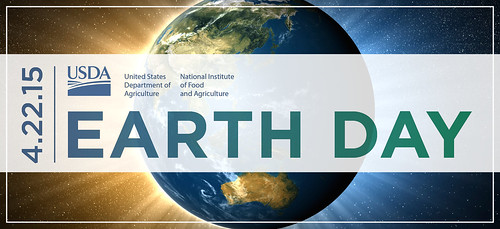
The National Institute of Food and Agriculture offers research grants to help respond to the world's water security issues. (iStock photo)
April 22 marks the 45th celebration of Earth Day, with its theme of “It’s our turn to lead.” The U.S. Department of Agriculture’s National Institute of Food and Agriculture (NIFA) is a leader in its support of cutting-edge sustainable and organic agricultural research.
The USDA estimated that 31 percent—or 133 billion pounds—of the 430 billion pounds of the available food supply at the retail and consumer levels in 2010 went uneaten in the United States. It’s not just people throwing away food after “super sizing;” food waste can begin at the farm, where crops are sometimes not harvested because they lack a perfect appearance. Waste also occurs through spoilage or improper cooking.
As bad as this is in terms of not feeding the hungry, wasting food is also wasting energy, water, and everything else required to grow, process, transport, and prepare food. Improving resource efficiency would also decrease the amount of nitrogen released to the environment.
Nitrogen is a crucial component to human life and is vital to our food supply chain, however, too much can cause a cascade of problems. Synthetic nitrogen fertilizer has helped to feed Earth’s growing population, but we introduce more than five times the reactive forms of nitrogen into the environment than natural processes. Human-introduced nitrogen has led to environmental issues such as eutrophication (intense plant growth in a body of water), hypoxia (lack of dissolved oxygen in water), smog, acid rain, and greenhouse gas emissions.
NIFA funds dozens of projects to help reduce, mitigate, or eliminate excess nitrogen in the environment. These include a grant of nearly $4 million in 2011 to Washington State University to use cutting-edge technologies to develop precision nitrogen management strategies for wheat production; a $660,000 grant in 2012 to Cornell University to increase nitrogen efficiency, reduce nitrogen loss, and enhance soil health in legume production; and a $300,000 grant in 2014 to Virginia Tech to remove nitrogen and phosphorus from animal and municipal wastewater.
Fortunately, even small lifestyle changes can reduce our nitrogen footprints and lessen their environmental impacts—and one of the easiest ways is by minimizing food waste. Avoiding food waste saves money, is practical, and is as simple as keeping food out of the trash.
An easy way to estimate your personal nitrogen footprint is with the Nitrogen Footprint Calculator (N-Calculator) developed by the University of Virginia. The N-Calculator helps consumers identify simple changes in their lifestyle that can reduce nitrogen losses to the environment. Making small changes every day can reduce your nitrogen footprint.
NIFA’s mission: Invest in and advance agricultural research, education, and Extension to solve societal challenges. NIFA’s vision: Catalyze transformative discoveries, education, and engagement to address agricultural challenges. For more information, visit http://nifa.usda.gov/.

April 22, 2015 is Earth Day.
No comments:
Post a Comment
Note: Only a member of this blog may post a comment.